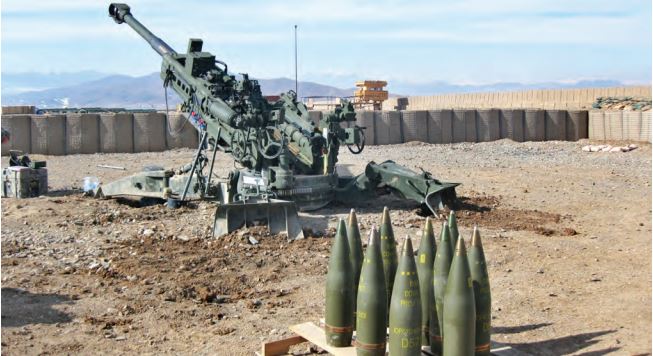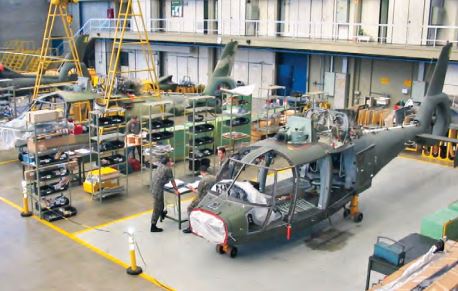Ajay Kumar, Defence secretary (production)
Biz@India
June_2019

Ajay Kumar, Defence secretary (Production)
Defence secretary (Production) Ajay Kumar, speaks to Biz@India about the initiatives of the government to promote the defence industry and why there is a need to focus more on technology development and innovation.
What are the major initiatives taken by the Indian government to promote defence production ecosystem in India?
Four-dimensional initiatives have been taken by the Ministry of Defence to promote defence production ecosystem in India. These are:
I. Under the Make in India in defence, we are actively promoting private defence industry while continuing to support the defence public sector. In this direction, we are enabling a level playing field, greater ease of doing business and greater exchange of information.
II. We are allowing defence export to friendly countries.
III. We are actively promoting indigenisation of platforms and components which are being imported.
IV. We are also promoting to bring startups closer to the defence and aerospace industry in the country.
Several initiatives have been taken under each of the above. During 2018-19 itself, over 50 reforms were approved to promote the defence industry.
The Defence Production Policy (DPrP) 2018, has set a target of domestic arms industry revenues to INR 1,700 billion (USD 24 billion) and robust growth in exports by 2025. Do you think it can be achieved?
I think this can be easily achieved and may be surpassed. Let me illustrate with an example, the defence export authorisations in 2016-17 were around INR 15 billion (USD 210 million). This increased to INR 46 billion (USD 658 million) during 2017-18 and exceeded INR 107.5 billion (USD 1.5 billion) in 2018-19. Our target for 2019-2020 is INR 200 billion (USD 2.9 billion).
We are additionally exporting defence and aerospace-related software/design services amounting to between INR 150 to INR 200 billion (USD 2.16 billion to USD 2.9 billion) which are not included in the above figures.
We have been able to mobilise a 600-strong start up ecosystem in defence and aerospace sectors since the launch of iDEX scheme by Prime Minister Narendra Modi in April 2018. This is phenomenal growth. Not only the Indian Armed Forces, but many foreign countries have also shown interest to work with our startups. As IT/ software and related technologies like IoT/AI/blockchain become increasingly relevant to defence and aerospace, we have no doubt that India will become a big player in defence innovation and technology development.
The Indian interim budget for 2019-20 for Defence has crossed INR 3 trillion (USD 43 billion) mark. However, if we look at the defence budget on R&D, India spends a lower percentage of its defence budget on it as compared to other major powers. What are your views on that?
There is growing recognition to spend more on technology development and innovation. However, the expenditure in this regard is now coming from industry and startups, in addition to the public sector. Several Indian industries are developing technologies or functionalities even when they are taking technologies from foreign OEMs. This contribution of the private sector is often not fully accounted in our defence R&D.
Meanwhile, defence PSUs and the Ordnance Factories Board have also recognised the need to focus on R&D. The OFB has developed the Dhanush Artillery gun, which is best in class, and has been inducted by India Army recently. Several new ammunitions have been developed by the OFB. Hindustan Aeronautics Limited (HAL) is focussing in R&D of rotary platforms in a big way while the Aeronautics Development Agency is developing fixed-wing fighter jets. Shipyards have developed a great capability for detailed ship design of all types. These organisations are increasing their spend on R&D and creating special structures focused only towards R&D. I am happy to say that they filed for 730 patents during 2018-19. This is significant also because for some of these organisations these were the first patents they ever filed, in their decades of existence.
How has been the progress on the government’s recent initiative to indigenise many different categories of armaments via the domestic private sector?
There is some progress in this regard. However, more needs to be done. Department of Defence Production has come out with an Indigenisation Policy in March 2019 which enables significant policy measures like the placement of long term orders on a vendor, use of Make-2 by Defence PSUs and OFB, acceptance of suo-moto proposals, setting up of the Indigenisation Fund and third-party testing to accelerate the indigenisation process.
According to a rough estimate, the defence PSUs and OFB typically produce components and parts in the magnitude of INR 200 to INR 250 billion (USD 2.9 billion-3.6 billion) every year. This is the scale of indigenisation market. We welcome Foreign Direct Investment (FDI) in indigenisation of components, for sale to India as well as for exports for most components 100 pc FDI through automatic route is allowed. Therefore, it is a huge business opportunity for foreign OEMs.

According to a rough estimate, the defence PSUs and OFB typically produce components and parts in the magnitude of USD 2.9 billion-3.6 billion every year
In giving a push to Make in India, what does the government prefer the most- foreign companies to come and set up their unit in India, or the transfer of technology with the Indian companies?
We encourage both. For each platform/item the categorisation specifies the nature of participation which is desired/expected. However, during the CEO’s Round Table with global CEOs in Aero sector, one suggestion was made by a CEO was to allow 100 pc FDI for 100 pc export. We are in the process of examining this issue.
Why, according to you, has the private sector not yet entered defence production in a big way? Why does the country still import 70 pc of its critical defence equipment despite several defence public sector undertakings, ordnance factories and defence research laboratories?
I do think it is correct to say that we import 70 pc of our defence equipment. We are increasingly procuring defence equipment from within the country. For example, we have now a robust artillery gun production system in the country. All tanks are being manufactured in the country. All armoured vehicles are manufactured in the country. Bulletproof jackets, helmets and other personal safety equipment are made in the country. In the aero sector, the Light Combat Aircraft (LCA) is being procured, as are the Advanced Light Helicopter (ALH) and Light Commercial Helicopter (LCH), the Dornier 228s. All of these are indigenously designed and made; practically all our ships are now made in India, all our missiles are made in India. Combat Management System for naval ships is being produced by multiple players. Similarly, several industry players are today developing Software Defined Radio capabilities.
However, we remain dependent on technologies on foreign OEMS. Therefore, as mentioned above, we need to focus more on technology development going forward.
I may also add, like we are doing our defence exports, we may continue to do necessary defence imports to ensure that our forces have the best equipment at their disposal.
With India all set to export its first batch of missiles this year to South East Asia and the Gulf countries, what kind of other exports can we expect in the future? Who is the biggest market for India?
I would not like to comment on specific defence export deals. However, apart from platforms and equipment, India also sees itself as a major exporter of defence components and sub-systems, software and design services.

In aero sector, the Light Combat Aircraft (LCA) is being procured, as are the Advanced Light Helicopter (ALH) and Light Commercial Helicopter (LCH), the Dornier 228s
Recently there have been complaints about the poor quality ammunition coming out of the state-owned Ordnance Factory Board (OFB) that has caused a flutter in the Indian Army. Do you think there is an urgency to modernise all of OFBs 412 factories?
Government has approved over 25 proposals amounting to nearly INR 8.5 billion (USD 120 million) during 2018-19 to modernise/ upgrade capital machinery in OFBs.
As regards to quality, we are closely monitoring the issue. Several steps have been taken including replacing manual processes with automated machines, traceability, process improvements. Indian Statistical Institute Kolkata is working with OFB to help them address some of these issues. Regular customer feedback and interaction at the level of MGO as well as lower down is being ensured. My own information is that there is significant improvement in quality with the quality measures taken.
OFB is also recognising that several ammunition have been thrown open to private industry. This competition has also helped in improving the quality performance within OFB.
How is the India-US Defence Technology and Trade Initiative (DTTI) progressing?
DTTI has started making very good progress now. We have been able to make several breakthroughs including finalising the industry security annexure, which would enable sensitive information to be shared with the Indian industry, allowing industry to industry collaboration between the two countries and also identifying projects that can be taken up for development.
The Defence India Startup Challenge was launched last year. How helpful has it been for the startup community in defence and aerospace?
Defence India Start Up Challenge (DISC) has been able to galvanise the startup ecosystem around defence and aerospace. Both DISC-1 and DISC2 had fantastic response. The winners are working closely with the Indian forces on respective challenges. While being excited about the tremendous response from startups in this regard, I must also appreciate the excellent collaboration provided by all the three Services — Army, Navy and Airforce — which has resulted in this huge positivity around DISCs. We are looking to expand this even further, going forward.
India has an edge in software technology like the Internet of Battle Things (IoBTs). How do you think it can be capitalised? How is the Transfer of Technology (TOT) model coming up in the defence production ecosystem?
I totally agree. We are already seeing this edge getting converted into products and systems. I mentioned about Combat Management Systems and SDR earlier. Many companies are developing unmanned platforms based on software/IoT capabilities. India’s growing missile programme is benefitting from our software capabilities. We see this as a big strength in developing our future defence industry ecosystem.
What are the challenges in front of the defence industry in India at present? Who is our major competition?
We need to focus more on technology development at the cutting edge. We need to involve different stakeholders including industry, academia, startups in this effort if we want to be able to develop technologies which are best in class. And I think this change is increasingly visible.









